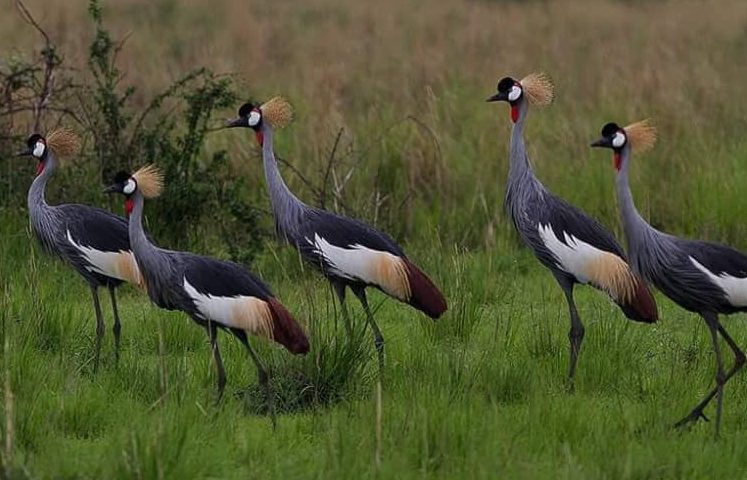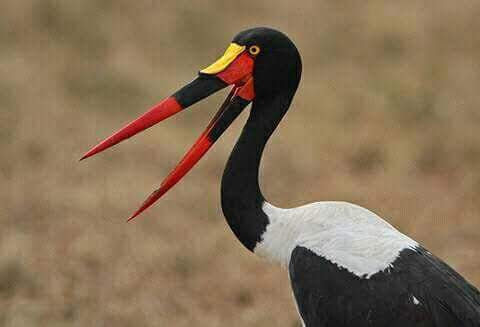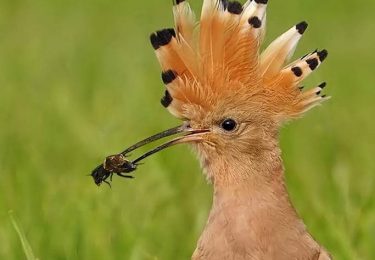- Home
- About Us
- Uganda safaris
- Long Safaris
- Short Safaris
- Day Short Safaris
- 1 Day Entebbe Botanical gardens weekend birding excursion
- I Day Entebbe City Tour
- 1 Day Jinja, Mabira, Ssezibwa Tour
- 1 Day Jinja Source of the Nile tour
- Lake Victoria Sunset Cruises
- 1 Day Kampala City Tour
- 1 Day Mabamba Shoebill Stork And Birding Tour
- 1 Day Makanaga Shoebill And Birding Trip
- 1 Day Ngamba Island Boat And Chimpanzee Excursion
- Other Tours
- Gorilla Safaris
- Uganda Gorilla safaris
- 4 Days Mgahinga Bwindi gorilla and golden monkey trekking safari
- 3 Days Mgahinga Gorilla trekking safari
- 5 Days Mgahinga Gorillas, Golden Monkey And Lake Bunyonyi Tour
- 5 Days Gorillas And Wildlife, L.Mburo, Bwindi and L. Bunyonyi
- 8 Days Wildlife, Gorillas, Golden Monkeys Trip
- 8 Days Gorillas Chimpanzee and wildlife Trekking Tour
- 9 Days Kidepo Valley National park and Bwindi Gorilla Safari. Wildlife and gorillas
- 11 Days Gorilla And Chimpanzee Tracking and wildlife Safari
- Rwanda Gorilla Safaris
- Uganda Gorilla safaris
- National Parks
- Kidepo Safaris
- Queen Elizabath Safaris
- Lake Mburo Safaris
- Mgahinga
- Mgahinga Gorilla National Park
- 3 Days Mgahinga Gorilla trekking safari
- 4 Days Mgahinga Bwindi gorilla and golden monkey trekking safari
- 5 Days Rwand-Uganda Gorilla, Golden Monkey trekking trip
- 5 Days Mgahinga Gorillas, Golden Monkey And Lake Bunyonyi Tour
- 8 Days Wildlife, Gorillas, Golden Monkeys Trip
- Other Safaris
- Home
- About Us
- Uganda safaris
- Long Safaris
- Short Safaris
- Day Short Safaris
- 1 Day Entebbe Botanical gardens weekend birding excursion
- I Day Entebbe City Tour
- 1 Day Jinja, Mabira, Ssezibwa Tour
- 1 Day Jinja Source of the Nile tour
- Lake Victoria Sunset Cruises
- 1 Day Kampala City Tour
- 1 Day Mabamba Shoebill Stork And Birding Tour
- 1 Day Makanaga Shoebill And Birding Trip
- 1 Day Ngamba Island Boat And Chimpanzee Excursion
- Other Tours
- Gorilla Safaris
- Uganda Gorilla safaris
- 4 Days Mgahinga Bwindi gorilla and golden monkey trekking safari
- 3 Days Mgahinga Gorilla trekking safari
- 5 Days Mgahinga Gorillas, Golden Monkey And Lake Bunyonyi Tour
- 5 Days Gorillas And Wildlife, L.Mburo, Bwindi and L. Bunyonyi
- 8 Days Wildlife, Gorillas, Golden Monkeys Trip
- 8 Days Gorillas Chimpanzee and wildlife Trekking Tour
- 9 Days Kidepo Valley National park and Bwindi Gorilla Safari. Wildlife and gorillas
- 11 Days Gorilla And Chimpanzee Tracking and wildlife Safari
- Rwanda Gorilla Safaris
- Uganda Gorilla safaris
- National Parks
- Kidepo Safaris
- Queen Elizabath Safaris
- Lake Mburo Safaris
- Mgahinga
- Mgahinga Gorilla National Park
- 3 Days Mgahinga Gorilla trekking safari
- 4 Days Mgahinga Bwindi gorilla and golden monkey trekking safari
- 5 Days Rwand-Uganda Gorilla, Golden Monkey trekking trip
- 5 Days Mgahinga Gorillas, Golden Monkey And Lake Bunyonyi Tour
- 8 Days Wildlife, Gorillas, Golden Monkeys Trip
- Other Safaris
20 Days Uganda birding and wildlife safari
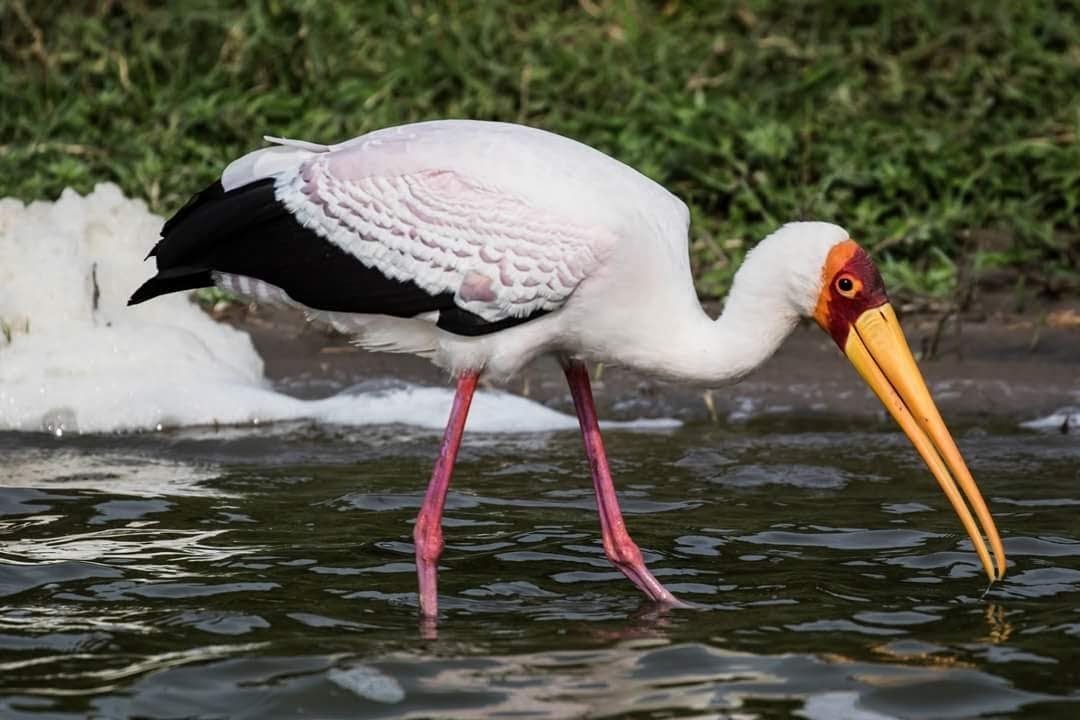
16 Days Uganda Bird watching and wildlife safari
October 18, 2017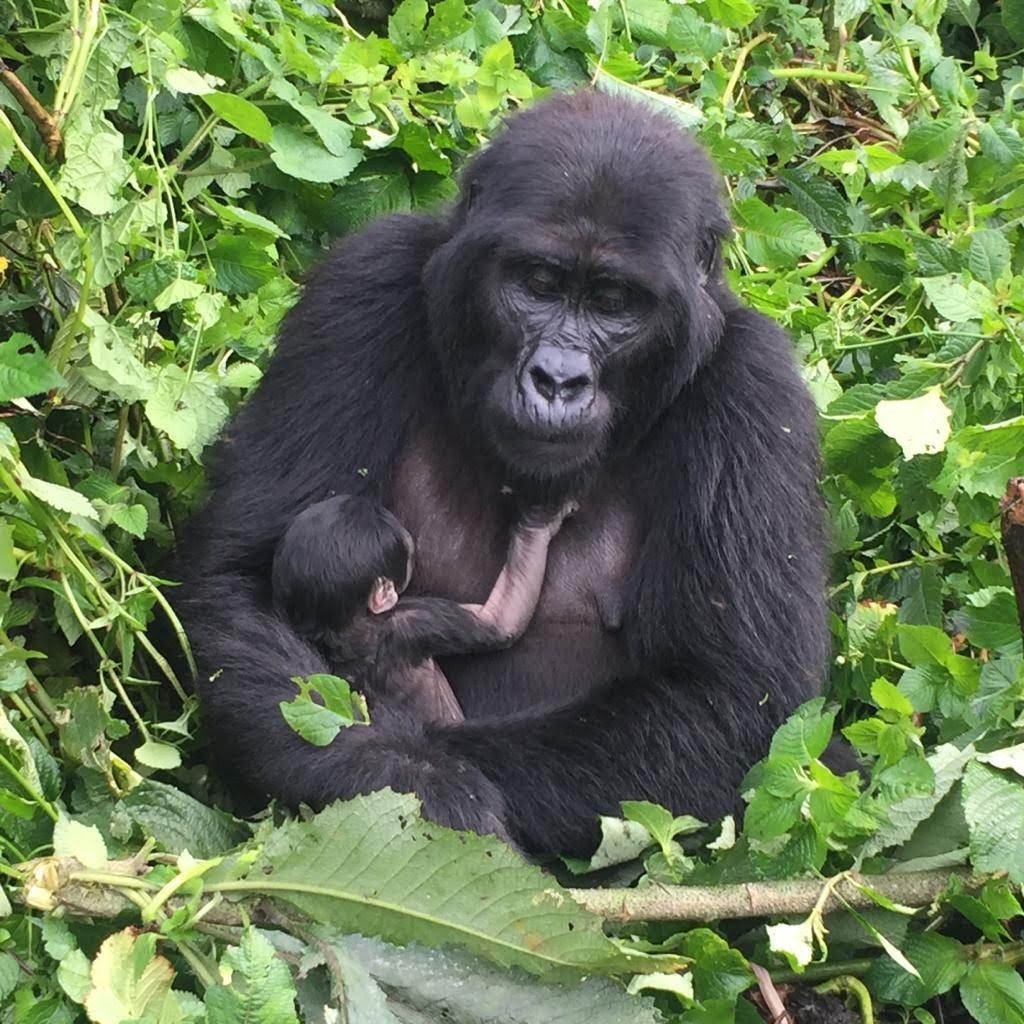
3 Days Uganda Gorilla Habituation Tour
October 18, 2017Best Uganda Birding and Wildlife Safari 20 days 19 nights
Uganda is a small landlocked country the size of Great Britain or the US state of Oregon. It lays on the elevated basin in between the western and eastern arms of the great East Africa rift valley. It boosts a record of 1043 bird species and is Africa’s number one birding destination and perhaps the whole world. The country is also endowed with abundant wildlife and natural beauty that it was once described as the “Pearl of Africa” by the former British prime minister Winston Churchill.
DAY BY DAY ITINERARY
Day 1: ARRIVAL AT ENTEBBE INTERNATIONAL AIRPORT
You will be met by our representative who will transfer you to your Hotel and give you a thorough briefing about your tour and Uganda in general.
Early arrivals will have an introduction to the birds of Uganda at the Botanical Gardens. Here we look out for weavers like the Slender-billed, Brown-throated¸ Golden-backed, Yellow-backed and Black headed, Grey-headed Gull, Cormorants, Common Squacco Heron, Yellow-billed Duck, Kingfishers- Pied, Giant, Malakite, Pygmy and Striped, Flycatchers-Swamp, African Paradise and Red Bellied Paradise, Broad-billed Roller, Hornbills- Black-and-white Casqued, Crowned and African Pied, Splendid Glossy Starling, Black-headed Gonolek, Orange Weaver, Verreaux’s Eagle-owl, Sunbirds – Red-chested, Collard, Scarlet Chested, superb, Green Throated, Olive, olive Bellied and bronze, Ross’s and great Blue Turaco, Open-billed Stork, Great Reed Warbler, Sedge Warbler, Grey-capped Warbler and much more. Overnight at 2friends or Anderita Beach Hotel
Day 2: Birding to Mabamba Swamp
After breakfast, we shall transfer to Mabamba Swamp which is located approximately 50km west of Kampala, there are numerous hot spots for birding before getting to the swamp. lookout for papyrus specials such as the Papyrus Gonolek, White winged warbler, Northern brown Throated, Weyns weaver to mention but a few. Move to Mabamba swamp here; birding is done on a canoe to explore the swamp extensively as we look out for the exceptional Shoebill Stork, African Water rail, Allen’s and Purple (swamp hen) Gallinule, Squacco, Goliath, Purple, Grey Herons, a variety of Egrets, ducks etc… There are also chances of encountering the elusive shy Sitatunga Antelope adapted to swampy habitats. Back in Entebbe at your lodge
Day 3: To Murchison Falls National Park.
Today we shall travel north to Murchison Falls. Along the way, we will no doubt find plenty of good birds. There are areas of moist grasslands and swamps where species such as Banded Snake-Eagle, Blue-cheeked Bee-eater, Green-backed Eremomela, Black Bishop, Yellow-shouldered and Marsh widowbirds occur. Dry woodlands further north will provide our best chance of finding the unusual Yellow-billed Shrike and Yellow-bellied Hyliota. As the countryside becomes drier with extensive grasslands dotted with fig trees, we may stop to search for African and the less common Bruce’s green-pigeons, White-headed Barbet, Yellow-fronted Tinkerbird, white Crested Turaco, flocks of Lesser Blue-eared and Violet-backed starlings and Piapiac, a small carved which associates with cattle and wild game.
Murchison Falls National Park is Uganda’s largest and famous for its big game, spectacular scenery and the falls for which the park was named. Abundant Hippos, Crocodiles, Elephant, Buffalo, Uganda Kob, oribi, patas monkeys, Jackson’s hartebeest, Waterbuck can be seen along with occasional Lions, hynas and elusive leopard. There is another chance (if we need it) of finding Shoebill amongst a huge variety of widespread African bird species in the wetlands. Other water birds abound and we hope to see Darter; Intermediate Egret; Goliath and Purple herons; African Finfoot; Woolly-necked, Saddle-billed and Yellow-billed storks; Hamerkop (near their giant stick nests); Egyptian and Spur-winged geese; Osprey; African Fish-Eagle; Black Crake; Purple Swamphen; the regal Gray Crowned-Crane (Uganda’s national bird); Senegal Thick-knee; Long-toed Lapwing; Spur-winged Plover; African Jacana; flocks of African Skimmer resting on the sandbanks; Malachite and Giant kingfishers and dashing Wire-tailed Swallows. Burrows in the riverbanks represent colonies of either colourful Red-throated Bee-eaters or querulous Pied Kingfishers. The elusive Pel’s Fishing-Owl is even a possibility here and elegant Red-necked Falcons frequent palm trees, which line the banks. In addition to the birds, large numbers of huge Nile Crocodiles; Hippopotamus; African Buffalo; Vervet Monkey and Olive Baboon are often seen at very close range, and herds of African Elephants sometimes bath en masse in the shallows.
The vista point at the top of the Murchison Falls offers incredible views of the Victoria Nile boiling down the narrow gorge. Bare, rocky islets are favoured perches and breeding sites of Rock Pratincole. We should see large numbers of these attractive waders wheeling in the spray of the falls. Thick riverine forest in this vicinity is home to the magnificent White-crested Turaco, often considered the most beautiful member of its striking family; Double-toothed Barbet; Yellow-throated Greenbul; Spotted Morning-Thrush; Red-capped Robin-Chat; Brown-throated Wattle-eye; the localized Red-winged Grey Warbler and Purple-banded Sunbird.
This evening (and tomorrow evening) it will be worthwhile to embark on a night drive in search of one of Africa’s most spectacular birds: the Standard-winged Nightjar. Witnessing a male Standard-winged Nightjar fluttering up from the track, his bizarre standards trailing behind him, is likely to be a highlight of the trip. Other possibilities include Spotted Thick-knee; Grayish Eagle-Owl; Northern White-faced Owl and Slender-tailed, Long-tailed, Plain and Swamp nightjars. Nocturnal mammals that we may encounter include Serval; White-tailed Mongoose; African Civet; Crested Porcupine; Blotched and Common genets and Uganda Grass-Hare. Our lovely lodge is perched on a ridge overlooking the mighty Victoria Nile – Paraa Safari Lodge or Pakuba lodge,Twiga lodge
Day 4 Murchison Falls National Park.
We will have a full day to explore the National Park with some very productive and varied dry thorn savanna and open woodland habitats close to the lodge.
Special birds include Abdim’s Stork; Stanley’s Bustard, Secretary bird; Black-breasted Snake-Eagle; Tawny and Martial eagles; Shikra; Dark and Eastern Chanting-Goshawk; Little Sparrowhawk, the irruptive Grasshopper Buzzard; Pallid and Montagu’s harriers; Harlequin Quail; Heuglin’s Francolin; Black-headed Lapwing; Vinaceous Dove; Blue-spotted and Black-billed Wood Doves, Senegal Coucal; Abyssinian Ground Hornbill, Black Scimitar-bill; Blue-breasted, Madagascar, Northern Carmine and Swallow-tailed bee-eaters, Broad-billed & Abyssinian Rollers, Black-billed & Double-toothed Barbets, Moustached Grass-Warbler, Marsh Tchagra, Yellow-mantled Widowbird, Black & Black-winged Red Bishops, Yellow-throated Leaflove, Black-necked, Whistling, Siffling & Singing Cisticolas, Broad-tailed, Red-winged & Red-winged Grey Warblers, Black-headed Gonolek, White-fronted Black-Chat, Sooty Chat, Snowy-crowned Robin-Chat; Western Violet-backed, Beautiful, Pygmy, Copper & Olive-bellied sunbirds; Silverbird; Sulphur-breasted and Gray-headed bushshrikes; White Helmetshrike; migrant Isabelline and Northern wheatears and Woodchat and Rufous-tailed shrikes; Black-headed Batis, Slender-billed & Compact Weavers, Black-bellied and Bar-breasted Firefinches and African Quailfinch, White-rumped Seedeater, Speckle-fronted Weaver; Rufous Sparrow; Fawn-breasted and Black-rumped waxbills.
The moist, grassy woodland to the south of the Nile is very different from that of the North bank and supports a host of localised birds including Brown-backed Woodpecker; Brown Babbler; Red-winged Prinia; the unusually proportioned Purple Glossy-Starling; Chestnut-crowned Sparrow-Weaver; Black-bellied Firefinch; Cabanis’ and Brown-rumped buntings; and if we are fortunate, Bat Hawk; African Cuckoo-Hawk; Ovampo Sparrowhawk; White-breasted Cuckoo-shrike and Red-winged Pytilia. Other species which we will search for here are African Cuckoo; Eurasian Hoopoe; African Gray Hornbill; Gray Woodpecker; Northern and Red-faced crombecs; African Paradise-Flycatcher (often of the spectacular white morph); Northern Puffback; Black-crowned and Brown-crowned tchagras; Tropical Boubou and Red-cheeked Cordonbleu.
Day 5: Budongo Forest at Kaniyo Pabide. Puvel’s illadopsis
Early this morning we will turn back south the short distance to the famous Budongo Forest. This will be our first introduction to central African forest birding, and we will spend much of the day in the vast Budongo Forest Reserve, the largest natural forest area in East Africa. Our efforts will be concentrated on the Kaniyo Pabidi area in the southern sector of the Murchison Falls NP, and the only known site in East Africa for Puvel’s Illadopsis. We can expect to find this bird as well as a wide range of other forest species. We will have much of the day to try and find a good mix of widespread species and more local specialties such as Crested Guineafowl sporting their “punk hair-do’s”, White-crested Turaco, Chestnut-crowned Eremomela, Yellow & Grey Longbills, Olive-bellied Crombec, Yellow-browed Camaroptera, Little Green Sunbird, Crested Malimbe and Red-headed Bluebill among others. Here are many other special birds with a West African origin: White-thighed Hornbill, Green-breasted Pitta, Rufous-sided Broadbill, Blue-breasted, Dwarf & Chocolate-backed Kingfishers, Yellow-crested & Brown-eared Woodpeckers, Yellowbill, Western Black-headed Oriole, Yellow-spotted, Hairy-breasted & Yellow-billed Barbets, Green Hylia, Buff-throated, Black-throated & Black-capped Apalises, Black-eared Ground-Thrush, Rufous-crowned Eremomela, the elusive Lemon-bellied Crombec, Crested & Red-headed Malimbes various forest starlings among others. We will also be in prime area for a wide range of primates such as Blue & Red-tailed Monkeys and Black and white Colobus – and if lucky Chimpanzees (this area is home to Uganda’s largest population of Chimpanzees) NIGHT at Masindi Hotel or Budongo Eco Lodge
Day 6: Birding the Royal Mile.
Today our birding will be centered on what we call “The Royal Mile,” a wide forestry track considered to be the country’s premier forest birding locality. Among the numerous specials we hope to find include Buff-spotted Flufftail; Tambourine Dove; Yellowbill a skulking forest coucal; the three forest-dwelling kingfishers; Chocolate-backed, Blue-breasted and Dwarf; the huge White-thighed Hornbill; Yellow-spotted, Hairy-breasted and Yellow-billed barbets and their diminutive cousins, the tinkerbirds (Speckled, Yellow-throated and Yellow-rumped all being likely); Western Black-headed Oriole; Green Hylia; Gray and Yellow longbills; the rarely encountered Uganda Wood-Warbler; Gray, Buff-throated, Black-throated, and the stunning Black-capped apalises; Rufous-crowned Eremomela; Green and elusive Lemon-bellied crombecs; African Forest-Flycatcher; Chestnut-capped Flycatcher; Purple-headed Glossy-Starling; Little Green, Green, Collared, Olive-bellied and the aberrant Gray-headed sunbirds and White-breasted Negrofinch.
There are many confusing forest greenbuls to test us and we shall work slowly through any flock that we encounter, looking for Plain, Gray, Yellow-whiskered, Slender-billed, Honeyguide, White-throated, Xavier’s, Red-tailed, and the striking Spotted greenbuls. This is the best place in Uganda to find the beautiful Nahan’s Francolin. It is fairly commonly heard, but we will require luck and patience to see this secretive and near-endemic species.
We will search the undergrowth alongside the track for the numerous under storey skulkers, which may include Scaly-breasted, Brown and Pale-breasted illadopses; Blue-shouldered Robin-Chat, Fire-crested Alethe; Rufous Flycatcher-Thrush; Red-tailed Ant-Thrush; Yellow-browed and Olive-green camaropteras and Grey-throated Tit-Flycatcher. We will keep an eye on any openings in the forest canopy, as Cassin’s and Crowned hawk-eagles; White-throated Bee-eater and Cassin’s, Mottled and Sabine’s spinetails are all possible. The spinetails occasionally drink from a nearby forest pond, and here we also hope to find a pair of brilliant Shining-blue Kingfishers. Canopy flocks support Yellow-mantled Weaver, Crested and Red-headed malimbes, Rufous Thrush and Uganda Woodland-Warbler. The area around the Park Headquarters is the only site in East Africa for the elusive canopy-dwelling Ituri Batis. Overnight Sambiya River lodge or Budongo Eco lodge
Day 7: Transfer To Kibale Forest National Park.
Today we will take a longish drive south from Masindi to Kibale. If time allows we may have time for birding along the journey at the Rift Valley escarpment looking out for Vinaceous Dove, Black-billed Barbet, Cliff-chat, Foxy Cisticola, Red-winged Pytilia and Chestnut-crowned Sparrow-Weaver. Birding here and en-route should continue to produce species not found elsewhere in East Africa and more akin to West African rainforest: Western Banded Snake-Eagle, Great Blue Turaco, Lizard Buzzard, Red-Chested Swallow, Joyful Greenbul, Masked Apalis and Green-headed Sunbird.
Kibale is an extensive National Park, c760 sq.km, at an altitude of c.4,000′, protecting a large block of rainforest that offers excellent birding. It harbours the greatest variety and concentration of primates found anywhere in East Africa and is famous for its Chimpanzees. Superb birds and primates combined with easy access, a good infrastructure and a variety of interesting activities make this forest a “must-see”. Bird life in Kibale is magnificent and prolific with over 335 species recorded: African Crowned-Eagle, Afep Pigeon, Red-winged Francolin, Black-billed Turaco, Narina Trogon, Black Bee-eater, White-headed Wood Hoopoe, Yellow-rumped Tinkerbird, African Pitta, Grey-winged Robin-chat, African Broadbill, Willcock’s & Thick-billed Honeyguides, Cassin’s Honeybird, Mountain Wagtail, Velvet-mantled Drongo, Petit’s Cuckoo-Shrike, Joyful & Honeyguide Greenbuls, Banded Prinia, Masked Apalis, Black-and-white Flycatcher, Pink-footed Puffback, Chestnut-winged Starling, Superb, Green-headed & Green-throated Sunbirds, Dark-backed Weaver are all possible specials of the area. Over night at Primate Lodge Kibale or Chimpanzee Guest House
Day 8 and Day 9 Kibale National Park
Early morning departure to Kibale National Park. This is a rainforest which hosts over 12 species of primates, including chimpanzee, L’Hoests, Red tailed, Blue Monkey, red colubus, black and white colobus, grey-cheeked Mangaby of the 12. Among other birds you find here Scaly Francolin, Marsh Tchagra, Black-bellied Seedcracker, Green-backed Twinspot, Pittas, Bicoloured Mannikin, White-naped Pigeon, Afep Pigeon, Narina’s Trogon, Joyful Greenbul, Olive Long-tailed Cuckoo, Black Bee-eater and many others. A nature walk at Kihingamy Wetland is rewarding. This is home to Blue-headed Coucal, Blue-breasted Kingfisher, Scaly-throated Honeyguide and Black-faced Rufous Warbler. Lunch is included. You shall have one half day off birding for chimpanzee tracking experience. Dinner and overnight at Primates Lodge or Chimpanzee Guest House
Day 10 and 11 Semliki National Park
After an early breakfast, we leave for Semliki Forest with our packed lunch for a whole day birding. The forest is a lowland tropical rain forest about 700m asl. Sometimes in the rain season, some parts are flooded and therefore boots are necessary. However this doesn’t stop it from being the best forest for birding in Uganda. This forest is a moist semi-deciduous forest that is home to Spot-breasted Ibis, Northern Bearded Scrub-robin, Capuchin Babbler, Lyre-tailed Honeyguide, Yellow-throated Green Cuckoo, White-bellied Kingfisher, Maxwell’s Black Weaver, Black-winged Oriole, Red-eyed Puffback, Crested and Red-bellied Malimbe, Brown-crowned Eremomela, Zenker’s Honeyguide and African Piculet, black throated coucal, Congo serpent eagle, Grey throated rail, Eastern Bearded Greenbul, African pita, Rufus Sided and African Broadbill. This is home to some of the regional endemics and West African Guinea-Congo biome endemics. Overnight stay at semlik Safari Lodge
Day 12 and 13 Queen Elizabeth National Park
This Park records approximately 612 species of birds. The one-day record in this Park is at times 296 depending on the weather, which is one of the highest in the world. As we transfer, birding is always rewarding en route. Our journey takes us through the beautiful plains of the park, a wild area of savanna and forest. We eventually reach the Kazinga Channel, linking Lakes George and Edward, and our base at Mweya Safari Lodge, an idyllic location set in its own grounds, where we stay for two nights. Straddling the Equator this vast park contains impressive crater lake scenery, expansive grasslands and forests; huge herds of Buffalo and families of Elephants, prides of Lions, solitary Leopards and a diverse array of birds. The famous boat cruise along the Kazinga Channel is among the most productive birding pleasure trips on earth!
The hotel gardens have Grey-headed Kingfisher, Swamp Flycatcher, Black-headed Gonolek, Grey-capped Warbler, Slender-billed Weaver and Brimstone Canary. We take an early morning game drive towards the famous Kasenyi Track, winding through grassland dotted with trees and nearby crater lakes. Our main aim is to locate Lions and other mammals including hyenas, leopards, Water Buffalo, Ugandan Kob, Waterbuck, Bushbuck and family groups of African Elephants. Along the road we may find Scaly Francolin, Red-necked Spurfowl, several lapwings, Harlequin Quail and Common Button-quail. Larks are numerous and include Rufous-naped, Flappet and the local White-tailed. Raptors include Martial Eagle, Banded Snake Eagles and Bateleur. In the afternoon we embark on a boat trip down the Kazinga Channel. This incredible area for waterbirds will afford stunning views of Pink-backed Pelican, Saddle-billed Stork, Hamerkop, African Spoonbill, Yellow-billed Stork, Water Thick-knee, African Skimmer and over-summering Palearctic shorebirds. In the evening before dinner we may have a night drive with in the peninsular searching for Gabon and Slender-tailed Nightjars, and owls. We stay at Mweya safari Lodge. Kasenyi safari lodge, Enganzi lodge
Day 14: Bwindi Natioanl Park
We leave after breakfast. We carry packed lunch and travel south birding to Bwindi Impenetrable National Park. We bird through the seasonal Ishasha road – an area known for climbing lions. We stay at Gorilla Resort or Gorilla Haven for three nights.
Day 15: Whole day Birding in the Forest
Today after breakfast, we take our lunch packs and join the forest for the whole day birding. Walking along forest trails is a wonderful natural experience with hundreds of colourful butterflies and areas of streams and tumbling waterfalls. Bwindi offers some of the best forest birding in Uganda. Around the lodges and camps, look out for Black Sawwing, Petit’s Cuckoo-shrike, Black and White Shrike, African Blue Flycatcher, Mackinnon’s Fiscal, Luhder’s, Bocages and many coloured Bush-shrikes, Mountain Greenbul, Black-billed, black necked, strange Weavers, Variable Sunbird and Grey-crowned Negrofinch. On the main trail we enter the forest proper as it passes under huge trees and areas of lichen-lined trunks. Species recorded along the main track will be many; they could include crested guineafowl, black bee-eaters, olive pigeons, Fine banded woodpeckers, several species of tinkerbirds, barbets, greenbuls, starlings, warblers, akalats, flycatchers, and possibly Red-fronted Antpecker, Rufous chested Fluff tail, Red-chested Owlet, and Montane masked Apalis. Another track takes us to the waterfall trail, a reliable area for Red-throated Alethe, Red-faced Woodland Warbler, Yellow-eyed Black Flycatcher and Kivu Ground Thrush, Cassin’s Hawk-eagle, Handsome Francolin, White-headed Wood-hoopoe and many other specialties. We also have a chance of locating primates such as L’Hoest’s Blue and Red-tailed Monkeys and troops of Chimpanzees.
Day 16: Gorilla tracking
Today is a whole day Gorilla tracking, we carry packed lunch. Gorilla tracking depends on the movements of the Gorillas in search for food. Walking varies from 20 minutes to a whole day. Note that these are mountain Gorillas and therefore they live in the mountains. The exercise therefore requires enough energy to go up and down the mountains including steep slopes. Porters are available from the surrounding community. They help to carry the bags and any heavy stuff from the visitors. Above all Gorilla tracking is a very captivating activity; it involves walking in the wilderness in search of these great apes. It can be a challenging activity; therefore physical fitness must be ensured. Today we transfer to the southern part of Bwindi- Ruhija for an over night stay.
Day 17: Buhoma to Ruhija, North of Bwindi Impenetrable National Park.
Today we will be moving from the lower forest biome to the seldom-visited higher forest in Bwindi Impenetrable National Park. In scrubby areas beyond Buhoma, we will search for Ross’ Turaco; Rufous-necked Wryneck; Brown-backed Scrub-Robin; Bronze, Copper and Variable sunbirds; Baglafecht, Black-necked and Holub’s Golden weavers; Yellow Bishop; Village Indigobird and Black-throated Seed-eater. Further along the road, we will pass through “The Neck,’ another well-known birding locality. Here we will search for species such as Black Goshawk; Bronze-naped Pigeon; Cinnamon-chested Bee-eater; Cassin’s Honeyguide; Petit’s Cuckoo-shrike; White-chinned Prinia; the enigmatic Chapin’s Flycatcher; Mountain Wagtail; Pink-footed Puffback; the rare Tiny Sunbird and the attractive Brown-capped Weaver.
Even further up the road, cultivated areas provide feeding opportunities for many seedeaters. Our main targets here will be the highly sought-after Dusky Twinspot and Yellow-bellied, Black-headed and Black-crowned waxbills. African Stonechat; Streaky and Thick-billed seedeaters; African Citril and Cape Canary may also be found here. Noisy Chubb’s Cisticolas will mock us from deep within the bracken, and the beautiful Doherty’s Bushshrike can be lured out from the dense vegetation. Mackinnon’s Shrikes survey the road from high, exposed perches.
There are so many special birds at these elevations that we do not want to rush through. Thus we plan to stay at a simple, but well-organised private camp. Two over nights at the Bakiga lodge
Day 18: Birding Ruhija – Bwindi Impenetrable National Park.
At the highest elevation bamboo forests, we will look out for African Black Duck and Mountain Wagtails in the small fast-flowing streams. Mountain and Augur buzzards; Ayres’s Hawk-Eagle, Rufous-chested Sparrowhawk; Rameron Pigeon; Brown-necked Parrot; Black-billed Turaco; Barred Long-tailed Cuckoo; White-headed Woodhoopoe; Western Green Tinkerbird; Olive Woodpecker; Thick-billed, Least, and the elusive Dwarf honeyguides; Black Sawwing; Gray Cuckoo-shrike; Eastern Mountain, Honeyguide, Red-tailed, Shelley’s and Yellow-streaked greenbuls; Olive Thrush; White-starred Robin; Stripe-breasted Tit; Mountain and the beautiful Gray-chested illadopses; African Hill Babbler (the local form often treated as a full species, Ruwenzori Hill Babbler); Black-faced, Ruwenzori, and Chestnut-throated apalises; Red-faced Woodland-Warbler; White-tailed Blue-Flycatcher; Yellow-eyed Black-Flycatcher; Ruwenzori Batis; Mountain Sooty Boubou; the rare Lagden’s Bushshrike; Sharpe’s Starling; Black-tailed Oriole; Strange Weaver, and Oriole Finch. Flowering trees attract the incredible Purple-breasted Sunbird as well as Blue-headed and Regal sunbirds, all three being extremely beautiful Albertine Rift Endemics. Dusky, Red-faced and the elusive Shelley’s crimsonwings, amongst the most beautiful and sought-after of African seedeaters, are possible at Ruhija.
Day 19: Birding to Lake Mburo National Park
After breakfast transfer to lake Mburo national park. This is Uganda’s smallest savannah park covering an area of 370sq km and is home to many zebras. It has got a mosaic habitat of rock outcrops, dry hillside, open and wooded savanna, forests, galleries, swamps. A variety of habitats have contributed to the avifauna diversity and 313 bird species have been recorded in the park including; Red faced barbet, Long tailed (Tabora) cisticola, Papyrus yellow warbler, African fin foot, Northern Brubru, Rofous bellied and white backed night heron, Black collared barbet, Brown chested plover, White winged tit, Northern brown throated weaver, White winged warbler some of which will be sighted on the evening boat ride. Animals in this park include zebras, elands, impalas, waterbacks, topis, hippos and much more. Overnight at Rwakobo rock lodge, Eagle’s nest lodge
Day 20: Departure
Today birding and game viewing will be done depending on the time of our flight. Bird again with us.
PARTICULARS |
2 PAX |
4 PAX |
6 PAX |
SRS |
LUXURY |
$8,000 |
$6,320 |
$5,400 |
$1,720 |
MODERATE |
$6,850 |
$4,950 |
$4,350 |
$1,130 |
Prices quoted include transport and a driver/guide, accommodation on a shared basis and meals as stated (in Kampala, Entebbe and other destinations, while on safari we shall be having full board accommodation) it include, boat trips, park fees and one chimpanzee plus one Gorilla permit. Gorilla viewing is subject to availability of permits, which are limited, therefore any gorilla permits required should be purchased when booking.
Prices exclude airfares, entry visas and airport taxes, all personal expenditure such as tips, telephone calls, laundry and drinks. For single rooms, a supplement needs to be paid.
Please note that clients will be using 4WD Vehicle – Land cruisers strictly with open roof/hatches and enough leg room as well as guaranteed window seats.
This is just a sample itinerary and i can tailor make for you many more according to interest, time and budget.


